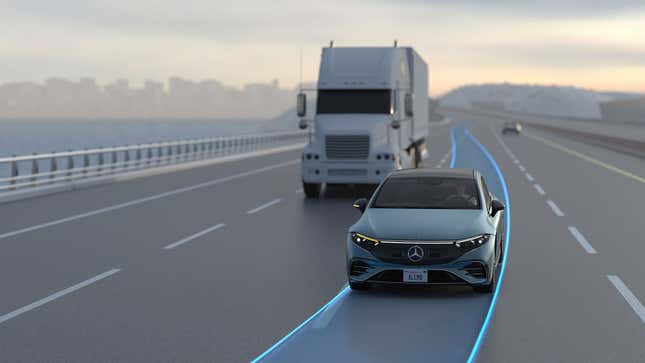
Like it or not, driver assistance tech like collision avoidance measures, lane-keeping systems and parking assist are all here to stay. But have you ever considered what the impact of this tech could be as it becomes more advanced and gets adopted by more and more automakers? Well, AAA wondered just that and commissioned a report into the effect advanced driver assistance systems (ADAS) could have on road safety over the next three decades.
The report, which was brought to our attention by the folks over at AutoBlog, found that ADAS could actually prevent as many as 27 million crashes between now and 2050, which could lead to 14 million fewer injuries and 250,000 less deaths on the road.
To reach this figure, the AAA study considered the impact Level 2 driver assist features such as lane-keeping, adaptive cruise control and automatic emergency braking could have on road safety. The study only analyzed systems that are able to accelerate, brake and steer a vehicle automatically.
According to AutoBlog, such systems could bring about a 16 percent drop in collisions and injuries on the road, and a 22 percent decrease in the number of fatalities every year.
While these kinds of features are slowly working their way onto more and more cars, nobody really knows what their adoption will look like over the coming years. As such, AAA warned that its findings were “subject to substantial uncertainty.” Doubts also remain about the efficacy of ADAS, with AutoBlog reporting that a recent study of certain driver assist features noted some kind of “issue” every eight miles.

Of course, there’s also the issue of driver expectation around what such systems are able to do. As such AAA noted that “consumers could use some assistance” when it comes to understanding the “workings and limitations” of features such as adaptive cruise control.
“The future for ADAS is bright, but it’s not a cure-all,” Mary Maguire, AAA northeast vice president of public and government affairs, said in a statement.
“While these technologies offer substantial safety benefits, we cannot engineer our way out of traffic injuries and deaths on U.S. roads. Investments in a diversity of proven traffic safety measures, including but not limited to vehicle technology, is in order.”
So, while these results should be taken with a pinch of salt, even if they prove to be partially correct, then that’s still a sizable drop in collisions and injuries on the road over the coming years.